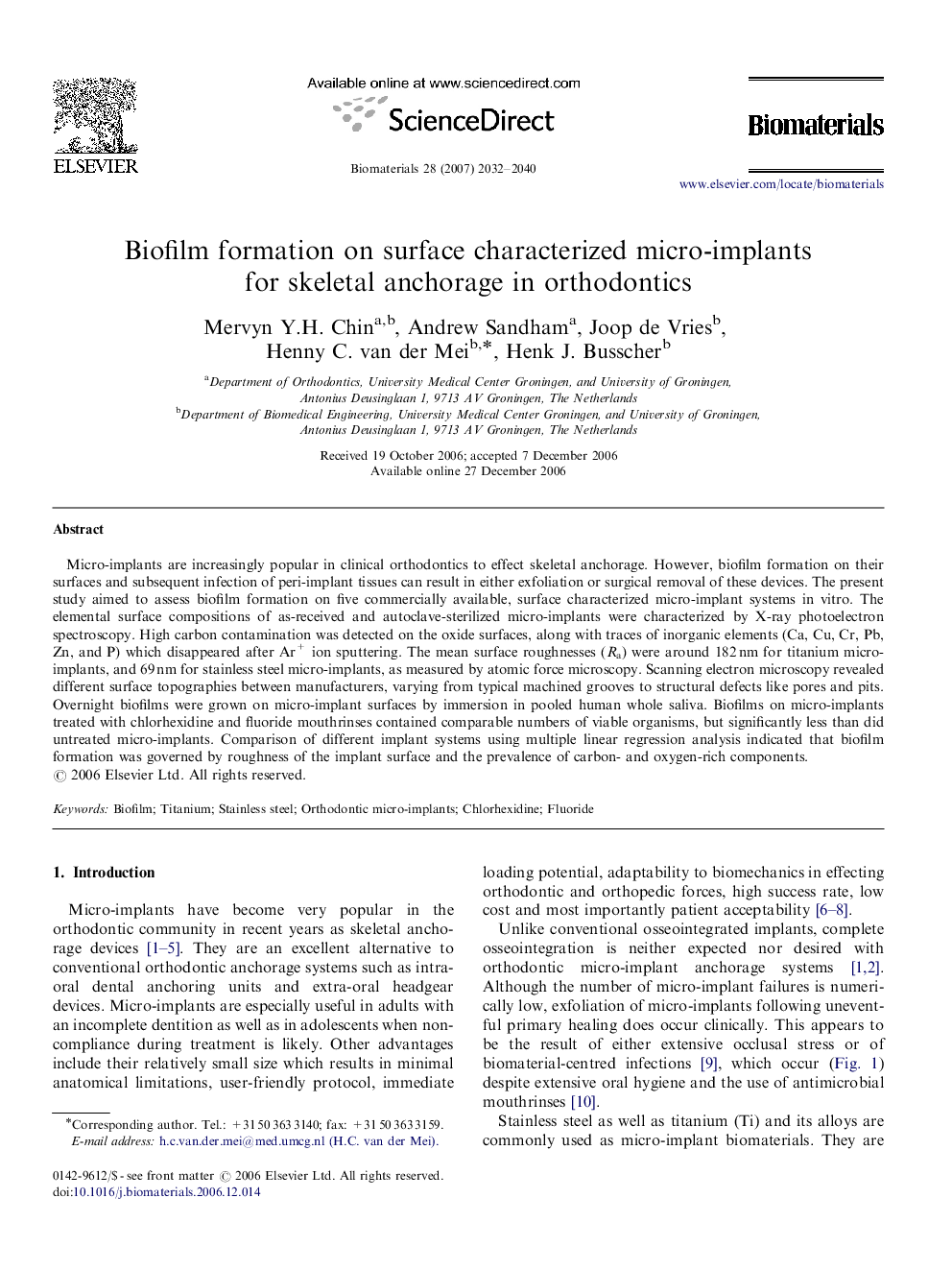| Article ID | Journal | Published Year | Pages | File Type |
|---|---|---|---|---|
| 11014 | Biomaterials | 2007 | 9 Pages |
Micro-implants are increasingly popular in clinical orthodontics to effect skeletal anchorage. However, biofilm formation on their surfaces and subsequent infection of peri-implant tissues can result in either exfoliation or surgical removal of these devices. The present study aimed to assess biofilm formation on five commercially available, surface characterized micro-implant systems in vitro. The elemental surface compositions of as-received and autoclave-sterilized micro-implants were characterized by X-ray photoelectron spectroscopy. High carbon contamination was detected on the oxide surfaces, along with traces of inorganic elements (Ca, Cu, Cr, Pb, Zn, and P) which disappeared after Ar+ ion sputtering. The mean surface roughnesses (Ra) were around 182 nm for titanium micro-implants, and 69 nm for stainless steel micro-implants, as measured by atomic force microscopy. Scanning electron microscopy revealed different surface topographies between manufacturers, varying from typical machined grooves to structural defects like pores and pits. Overnight biofilms were grown on micro-implant surfaces by immersion in pooled human whole saliva. Biofilms on micro-implants treated with chlorhexidine and fluoride mouthrinses contained comparable numbers of viable organisms, but significantly less than did untreated micro-implants. Comparison of different implant systems using multiple linear regression analysis indicated that biofilm formation was governed by roughness of the implant surface and the prevalence of carbon- and oxygen-rich components.
